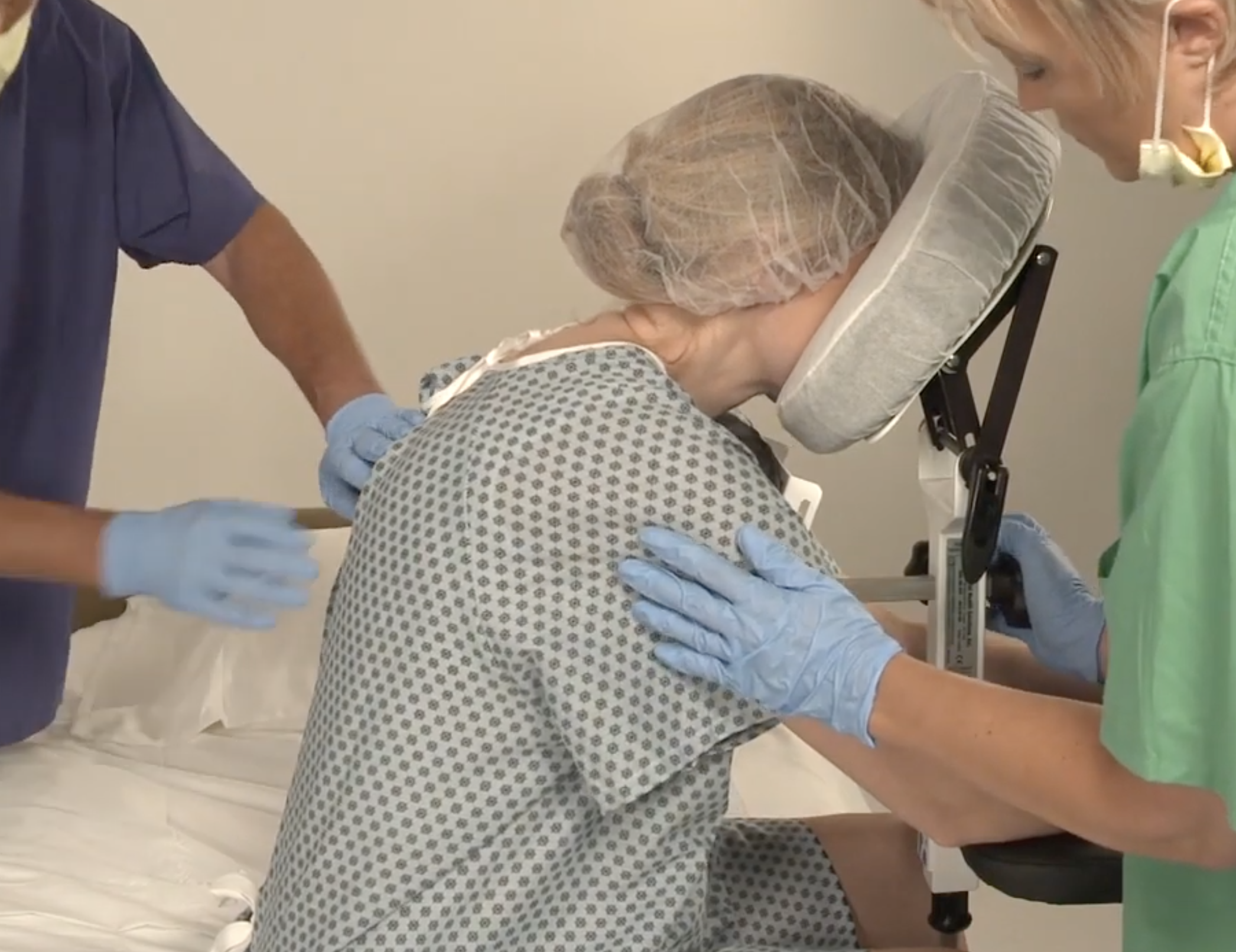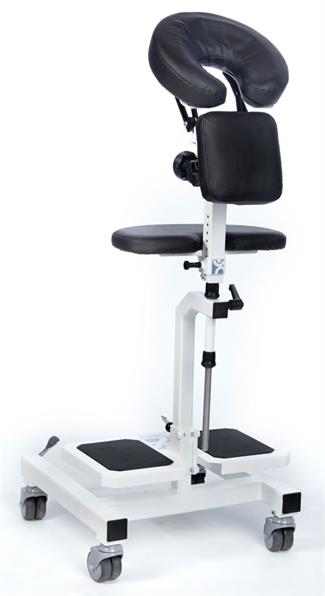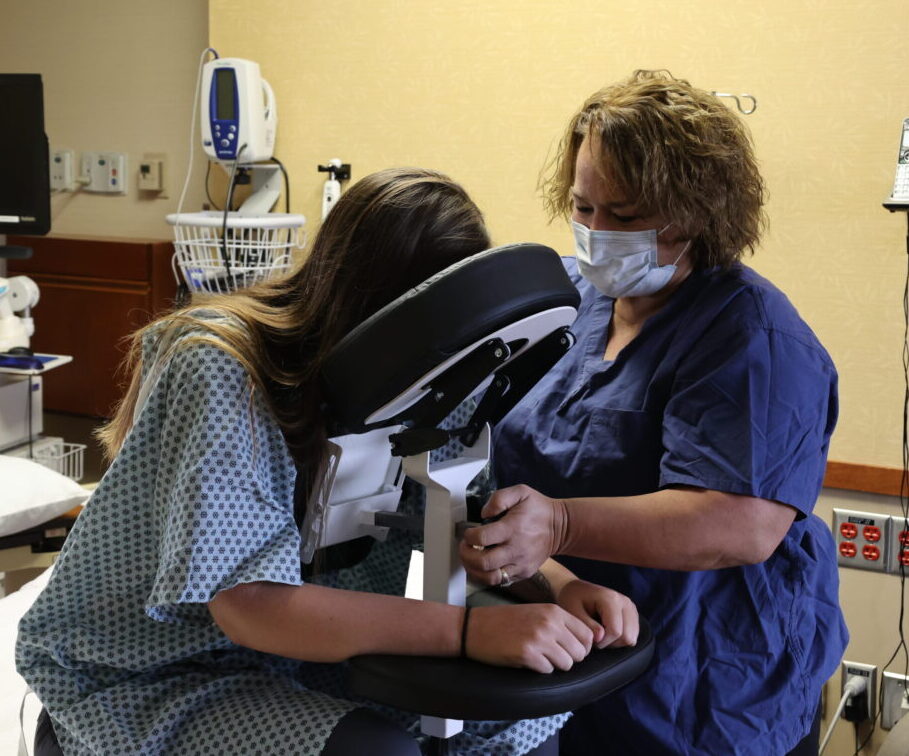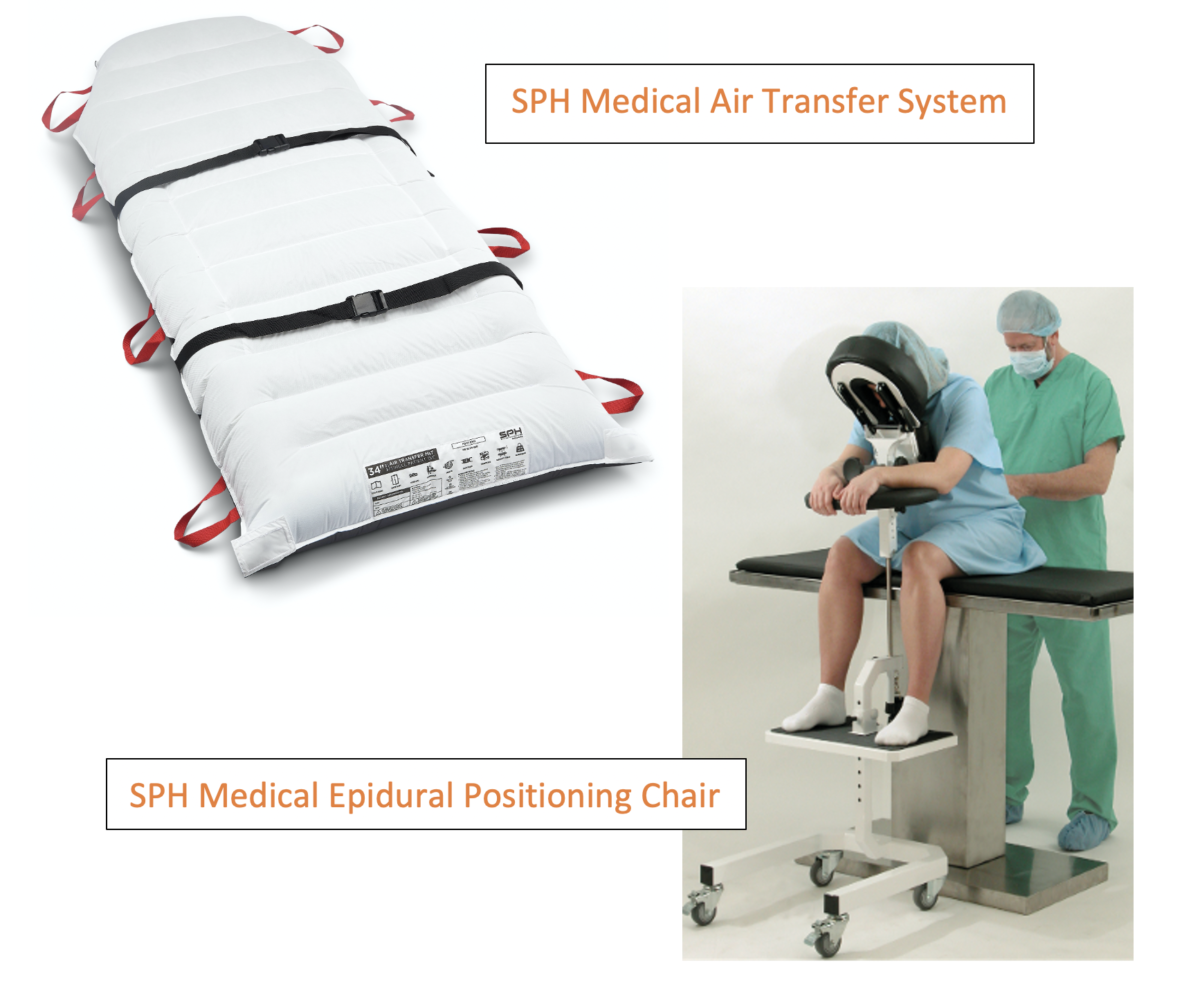While Stanford University researchers looked for data on epidurals for pregnant obese women, they found a stunning statistic. Seventy-one percent of all pregnant women get an epidural or other spinal anesthesia, an increase of 10 percent over a ten-year period. Recent advancements in technology allow the SPH Medical Air Transfer System and the Epidural Positioning Chair to help anesthesiologists and nursing staff implement safe patient handling to improved outcomes.
Enhancing Safe Patient Handling Process for Patients and Nurses
The miracle of getting relief from extreme discomfort with an epidural or spinal block helps people tolerate the pain of childbirth and surgery. Patient positioning by nurses working in the hospital setting is not limited to Labor and Delivery and Surgery departments. Anywhere patients require physical assistance nurses and therapists are present to help. Unfortunately, as the keystone of the country’s health care system, nurses experience a higher than average risk of musculoskeletal injury. Delivering care to others often comes at the expense of personal well-being, but specially adapted devices help lighten the load.
Guidelines in the Safe Patient Handling tool kit by the Association of Peri-Operative RNs (AORN) recommend an Air Transfer System for surgical patients over 157 pounds to lessen the incidence of injury to caregivers. In addition, the highly efficient system requires fewer staff members to move patients safely. At SPH Medical, we have perfected the design first introduced in the 90s to reduce risks of infection and cross-contamination. With successful use in surgery departments across the country as a patient-specific device, the system features a Single Patient Use Transfer Mat that remains with each patient until no longer needed.
Exploring the Features of the Air Assisted Transfer System
Each feature of the system contributes to the efficiency and safety of moving patients without risk of injury to staff.
- Components of each system include a transfer mattress, motor, air hose, power cord and optional transport cart.
- Safety straps on the transfer pad connect across the patient during transfer.
- Ergonomic handles allow caregivers to transfer horizontally or boosting up in bed.
- Perforated air chambers between the transfer mattress and surface reduce friction and provide support for the patient.
- Optional disposable top sheets on the Single Patient Use Transfer Mat can keep moisture away from the patient and protect the moisture-proof mattress from soiling.
- An efficient air hose and motor design make the transfer process safe and routine for patients and staff.
Nurses are faced with high frequency patient handling tasks, from repositioning to lateral transfers transfer, that put them at risk for severe career ending injuries. The significant direct medical expenses and immeasurable indirect costs of these injuries demand that these high risk tasks are addressed and modified with the appropriate tools to create a safe work environment for nurses. To address these issues, SPH Medical is delivering innovative devices that provide technological advancements in safety and efficiency to improve patient care and staff safety.
Increasing Safe Patient Handling Practices
As the high volume of surgical cases makes epidurals and spinal blocks almost commonplace, the need to improve positioning deserves attention. However, even though the procedures continue to gain popularity, the constant factor concerns the process of positioning patients.
The traditional method allows a level of imprecision that the Epidural Positioner prevents. Preparation for the procedure required a patient to lie on one side or lean over a bedside table until the gold standard for positioning became essential in hospitals. The Epidural Positioner makes precision the highest priority. Makeshift substitutes for accuracy require patients to use pillows to achieve spinal flexion and allow access to the spine.
Unfortunately, without effective designs that feature technological advances, the nursing staff must position patients manually. Even worse, the procedure requires manual static holding and counterpressure that increases caregivers’ risk of musculoskeletal injury. A safe patient handling tool such as an epidural positioning device (EPD) eliminates the need for manual techniques that create risk for patients and staff.
Reducing the Risk of Injury
An Epidural Positioner provides access for pregnant moms to get relief from unendurable pain, and it has many applications outside the labor and delivery unit. For example, surgical departments worldwide use EPD to prepare patients for joint replacement surgeries. In many cases, a spinal block provides the treatment that has become the standard of care.
Imaging departments have discovered the benefit of the EPD as well. A common procedure called Thoracentesis which involves draining fluid from the pleural cavity in the lungs requires patient positioning that puts Ultrasound technicians and nurses at risk. The Epidural Chair solves this issue by safely positioning the patient while allowing access for the pulmonologist to perform the procedure. The patient is comfortably positioned on the EPD instead of the historic bedside table with pillows that doesn’t lock, a dramatic improvement in safety.
While nursing staff have traditionally used manual handing to achieve proper proper patient positioning in all areas of the hospital, their dedication to duty may come at a great expense. Occasionally, an exceptional opportunity offers excellent options for patients and nursing staff, and the SPH Medical product offering of Air Assisted Transfer Systems and the EPD provide such access. SPH Medial delivers a blend of efficiency and effectiveness that removes the burden of pushing, pulling, and lifting by nursing staff significantly reducing risk of injury and dramatically improving patient satisfaction.

 The epidural chair directly minimizes this risk of injury for any labor and delivery unit or surgery department because it positions and holds patients automatically without the need for any special maneuvering or exertion on the healthcare provider. According to the Center for Disease Control, there is evidence-based research showing that replacing manual patient handling can significantly reduce the rate of nursing injury.
The epidural chair directly minimizes this risk of injury for any labor and delivery unit or surgery department because it positions and holds patients automatically without the need for any special maneuvering or exertion on the healthcare provider. According to the Center for Disease Control, there is evidence-based research showing that replacing manual patient handling can significantly reduce the rate of nursing injury.


